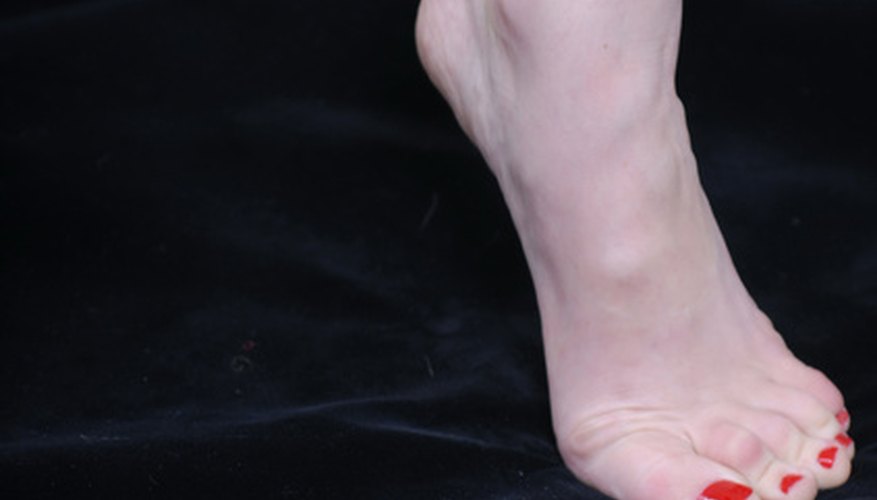Blood clots usually develop in the feet when a vein is damaged or when blood flow is altered due to such factors as obesity, a sedentary lifestyle, recent surgery, smoking or diabetes. Though blot clots in the feet are not common, if you exhibit any of the following signs or symptoms, you should immediately seek medical attention--blood clots can lead to a heart attack or a stroke.
Localised Sensations
When a blood clot develops in the foot, the foot may swell, tingle, feel numb or throb, particularly on the sole of the foot. The foot may be tender when touched, particularly in the area of the blood clot. Some individuals may experience a throbbing pain, even after resting and elevating the foot. If you flex your foot and experience a sharp, shooting pain, this may also be a sign of a blood clot.
- When a blood clot develops in the foot, the foot may swell, tingle, feel numb or throb, particularly on the sole of the foot.
Visual Cues
Feet with blood clots may turn red or develop red patches. The veins on the surface of the foot (including the tops, bottom and sides of the foot) may look larger and wider. You cannot actually see the blood clot by looking at the affected foot--medical doctors use special imaging technology to locate blood clots.
Other Pain
An individual with a blood clot in his foot may also experience pain or discomfort in other regions of the body, particularly the upper body. Such pain or discomfort may occur in one or both arms, the back, neck, jaw or stomach. Blood clots can impact blood flow to these areas of the body, resulting in neurological damage and thus pain or discomfort in other areas of the body not related to the clot.
Other Symptoms
Other signs and symptoms of blood clots in a foot may include dizziness or loss of consciousness, nausea or vomiting, shortness of breath, altered speech, confusion or seizures.
